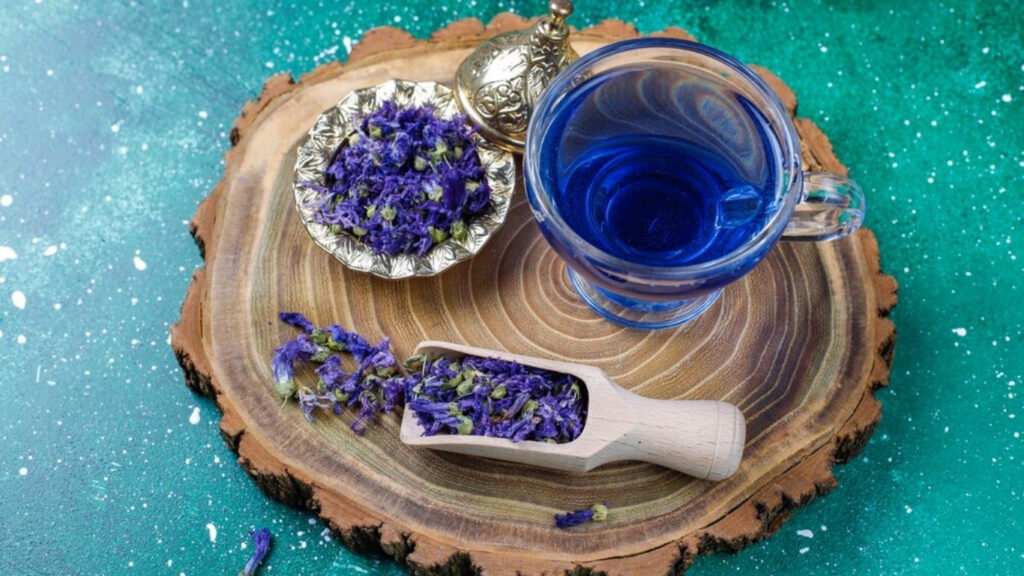Hyssop (Hyssopus officinalis), a perennial herb native to the Mediterranean region, has held a sacred and medicinal status for thousands of years. With its distinctive aroma, vibrant violet-blue flowers, and rich history in traditional healing and religious ceremonies, hyssop is more than just a pretty plant—it’s a potent botanical with diverse applications for body, mind, and spirit.
In this comprehensive guide, we will explore everything about hyssop: its origins, medicinal uses, spiritual significance, health benefits, how to grow and use it, and the science that backs up its ancient reputation.
Table of Contents
- Introduction to Hyssop
- History and Cultural Significance
- Botanical Characteristics
- Nutritional and Phytochemical Composition
- Medicinal Benefits of Hyssop
- Uses of Hyssop in Modern Herbal Medicine
- Spiritual and Religious Uses of Hyssop
- How to Use Hyssop: Recipes and Preparations
- Growing Hyssop at Home
- Potential Side Effects and Precautions
- Scientific Research and Studies
- Conclusion: The Enduring Power of Hyssop
1. Introduction to Hyssop
Hyssop has long been valued for its healing, aromatic, and purifying properties. The name “hyssop” comes from the Hebrew word ezov, which means “holy herb.” It has been referenced in ancient texts, including the Bible, where it was used for purification rituals.
Today, hysso,p is commonly used in herbal teas, essential oils, natural remedies, and spiritual practices. It contains active compounds such as flavonoids, volatile oils, and tannins that make it a versatile herb in alternative medicine.
2. History and Cultural Significance
Hyssop’s legacy stretches back over 2,000 years. It was well known in:
- Ancient Egypt: Used for embalming and religious rituals.
- Hebrew Traditions: Mentioned in the Bible during the Passover (Exodus 12:22) and Psalms (Psalm 51:7) as a tool for spiritual cleansing: “Purge me with hysso,p, and I shall be clean.”
- Ancient Greece and Rome: Employed for respiratory ailments, digestive issues, and to flavor liqueurs and dishes.
Throughout history, hyssop symbolized cleanliness and protection, both physically and spiritually.
3. Botanical Characteristics
- Scientific Name: Hyssopus officinalis
- Family: Lamiaceae (Mint family)
- Growth Habit: A small, bushy, evergreen shrub
- Height: 1–2 feet
- Flowers: Blue, pink, or white spikes that bloom in summer
- Leaves: Narrow, aromatic, dark green
It thrives in dry, rocky soils and sunny climates. Its hardiness and beautiful flowers make it popular in herb gardens and pollinator-friendly landscaping.
4. Nutritional and Phytochemical Composition
Hyssop is rich in bioactive compounds, including:
- Flavonoids: Antioxidants like luteolin and apigenin
- Volatile Oils: Pinocamphone, isopinocamphone, limonene, and camphor
- Tannins: Help with astringent effects and antimicrobial properties
- Marrubiin: A bitter compound aiding in respiratory health
These constituents contribute to its medicinal, antimicrobial, and anti-inflammatory properties.
5. Medicinal Benefits of Hyssop
1. Respiratory Relief
Hyssop has been traditionally used to relieve symptoms of asthma, bronchitis, and colds. It acts as an expectorant, helping to loosen mucus and clear the respiratory tract.
2. Digestive Aid
It promotes digestion by stimulating gastric juices and reducing bloating. Herbalists use hysso,p to treat gas, indigestion, and stomach cramps.
3. Antimicrobial Properties
The essential oil of hysso,p demonstrates activity against bacteria, fungi, and viruses. It has been used for skin infections and minor wounds.
4. Anti-inflammatory Effects
Hyssop may reduce inflammation internally and externally, beneficial for conditions like arthritis and sore muscles.
5. Antioxidant Action
Its flavonoids help protect the body from oxidative stress, slowing aging and reducing the risk of chronic diseases.
6. Relief from Anxiety and Stress
Hyssop tea and aromatherapy use promote relaxation and mental clarity.
6. Uses of Hyssop in Modern Herbal Medicine
Hyssop is used in several forms:
- Tea: Dried leaves steeped for calming and respiratory benefits
- Tincture: Concentrated herbal extract for internal use
- Essential Oil: Used topically or in aromatherapy (must be diluted)
- Salves and Balms: For skin issues or chest rubs
- Capsules: For controlled dosage
Suggested Dosages:
- Tea: 1-2 teaspoons of dried hysso,p in hot water, up to 3 times daily
- Tincture: 1-2 mL up to 3 times daily
- Essential Oil: Use in a diffuser or dilute with carrier oil for topical use
Always consult a healthcare provider before starting any herbal regimen.
7. Spiritual and Religious Uses of Hyssop
Hyssop is deeply symbolic in spiritual traditions:
- Biblical Cleansing: Used for purification rituals in ancient Judaism
- Catholic Holy Water: Sprinkled with a hysso,p branch for sanctification
- Protection and Purging: Used in folk magic and Wicca to clear negative energy
- Spiritual Baths: Infused in water to spiritually cleanse and bless the body
Hyssop is still included in spiritual smudging, anointing oils, and home protection rituals today.
8. How to Use Hyssop: Recipes and Preparations
1. Hyssop Tea Recipe
Ingredients:
- 1 tsp dried hysso,p leaves
- 1 cup boiling water
Instructions:
Steep for 10 minutes, strain, and enjoy up to 3 times daily.
2. Hyssop Steam Inhalation
Ingredients:
- 3 drops hysso,p essential oil
- 1 bowl of hot water
Instructions:
Inhale the steam with a towel over your head for respiratory relief.
3. Spiritual Cleansing Bath
Ingredients:
- 1 handful of fresh or dried hysso,p
- 1 gallon of hot water
Instructions:
Steep for 15 minutes, strain, and add to bathwater.
4. Chest Rub Balm
Ingredients:
- 1/4 cup coconut oil
- 10 drops hysso,p essential oil
Instructions:
Blend and apply to chest for congestion relief.
9. Growing Hyssop at Home
Hyssop is easy to grow and thrives in:
- Hardiness Zones: 3–10
- Soil: Well-drained, alkaline soil
- Sunlight: Full sun
- Watering: Low to moderate; drought-tolerant
Planting Tips:
- Start from seeds or cuttings
- Space 12-18 inches apart
- Trim regularly to encourage growth
- Attracts bees and butterflies
Hyssop also makes an excellent companion plant in vegetable gardens, deterring pests.
10. Potential Side Effects and Precautions
While generally safe in moderate amounts, hysso,p may pose risks:
- Essential Oil Toxicity: High doses can cause seizures
- Pregnancy Warning: Avoid in large amounts as it may stimulate uterine contractions
- Allergic Reactions: Those allergic to plants in the mint family should be cautious
- Drug Interactions: Consult a doctor if using medications, especially anticonvulsants
General Rule: Use hysso,p in moderation and avoid essential oil use in children and pregnant women without professional advice.
11. Scientific Research and Studies
1. Antiviral Properties
A 2010 study published in Journal of Ethnopharmacology showed hyssop’s extract inhibited HIV replication in vitro.
2. Antibacterial Activity
Studies have shown effectiveness against Staphylococcus aureus and Escherichia coli.
3. Antioxidant Strength
Research confirms that hyssop’s flavonoids help reduce oxidative stress, supporting its use in age-related health maintenance.
Although more clinical research is needed, these preliminary results support traditional uses.
12. Conclusion: The Enduring Power of Hyssop
Hyssop is a plant that transcends time—used by ancient civilizations for healing and spiritual purification, and today valued for its natural therapeutic properties. Whether you’re looking to improve respiratory health, reduce inflammation, cleanse your space, or explore spiritual traditions, hysso,p offers a natural and holistic approach.
With its vibrant presence in gardens, potent essential oils, and rich history, hysso,p remains a powerful herb in both traditional and modern practices.
Ready to harness the benefits of hyssop? Whether in your teacup, diffuser, or garden bed, this ancient herb continues to inspire health, harmony, and holiness.






